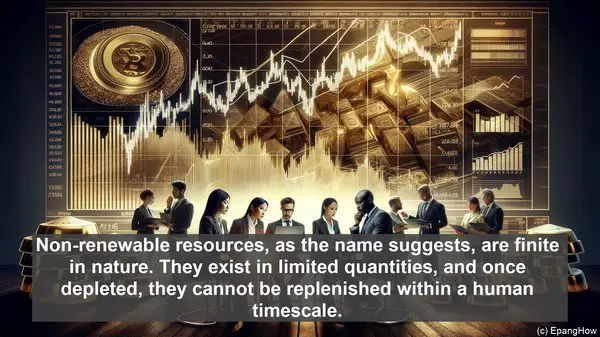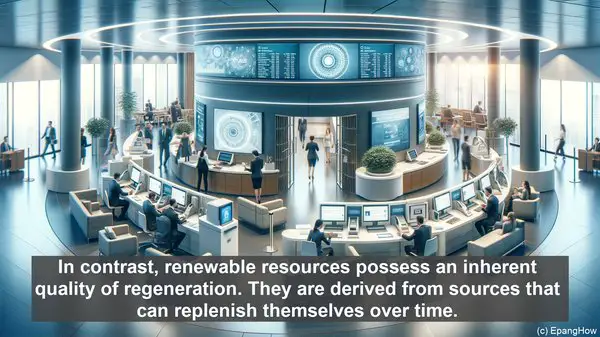Introduction: The Essence of Resources
Greetings, ladies and gentlemen! Resources are the backbone of our society, enabling progress and development. However, not all resources are created equal. Today, we’ll explore the fundamental distinction between non-renewable and renewable resources, shedding light on their unique attributes and the implications they hold for our planet.
Non-Renewable Resources: Finite and Precious
Non-renewable resources, as the name suggests, are finite in nature. They exist in limited quantities, and once depleted, they cannot be replenished within a human timescale. Fossil fuels like coal, oil, and natural gas are prime examples. These resources took millions of years to form through geological processes, but our consumption outpaces their formation. Consequently, their scarcity looms large, and their extraction often involves complex and environmentally impactful methods.
Renewable Resources: Nature’s Endowment
In contrast, renewable resources possess an inherent quality of regeneration. They are derived from sources that can replenish themselves over time. Sunlight, wind, water, and biomass are prominent examples. The beauty of renewables lies in their perpetual availability, given the right conditions. Harnessing these resources often involves innovative technologies, such as solar panels or wind turbines. While their potential is vast, their utilization is contingent on factors like geographical location and weather patterns.

Implications and Significance
The divergence between non-renewable and renewable resources carries profound implications. Non-renewables, being finite, face an uncertain future. As demand surges, their scarcity intensifies, leading to geopolitical tensions and economic uncertainties. Moreover, their extraction and utilization have well-documented environmental consequences, from air and water pollution to greenhouse gas emissions. On the other hand, renewables offer a beacon of hope. Embracing them not only mitigates environmental harm but also fosters energy independence, job creation, and a more sustainable future.

The Imperative of Resource Management
Given the contrasting nature of these resources, effective resource management becomes paramount. It necessitates a multi-faceted approach, encompassing conservation, innovation, and diversification. Strategies like energy efficiency, circular economy principles, and responsible mining practices can help optimize resource utilization. Additionally, fostering research and development in renewable technologies is crucial for their widespread adoption and integration into our energy systems.
